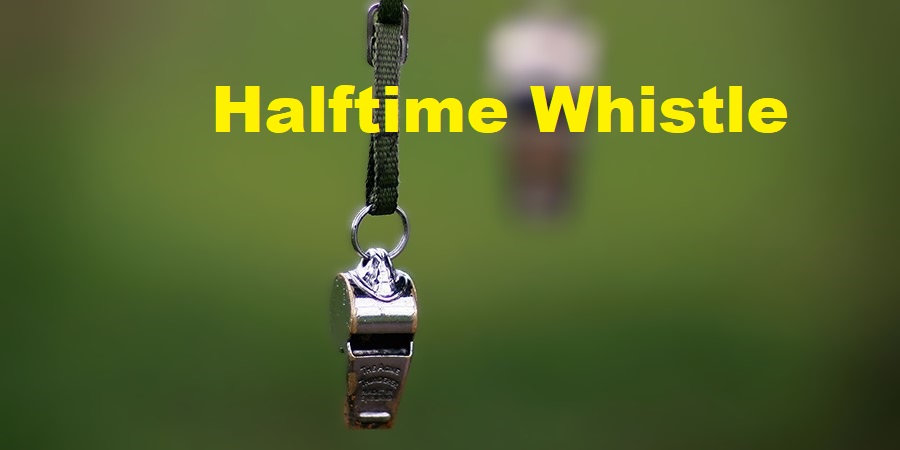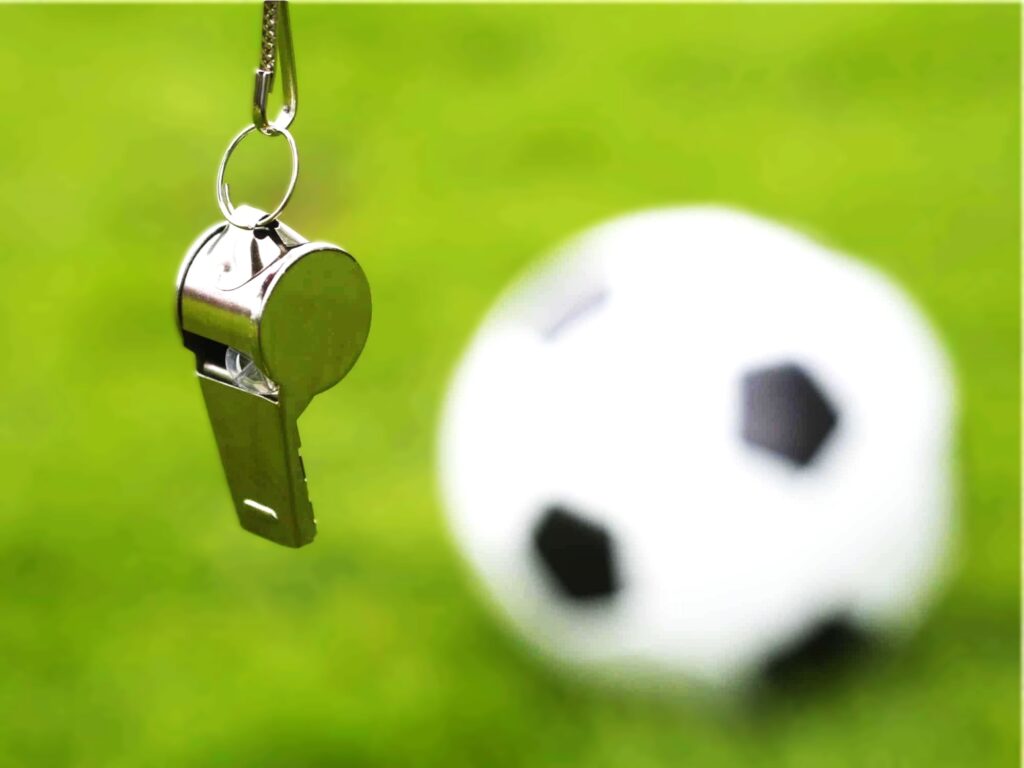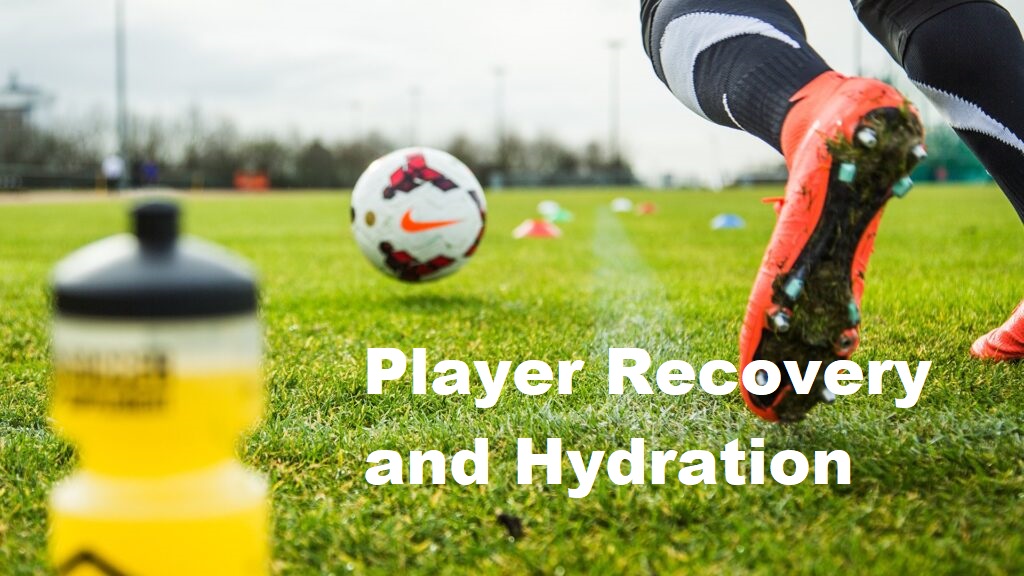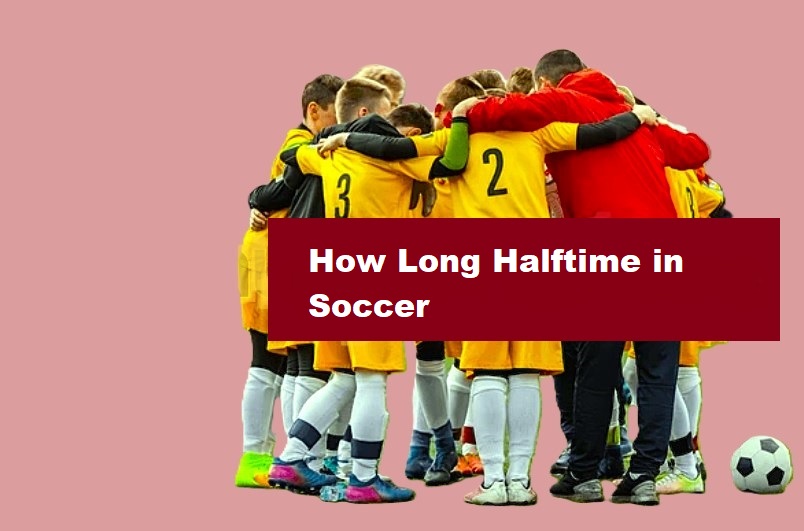The Comprehensive Guide to How Long is Halftime in Soccer: More than Just a Break
Soccer, the world’s most popular sport, is known for its continuous play and strategic maneuvers. At the heart of every match lies a crucial interval that can make or break a team’s performance: halftime, and we will lights on How Long is Halftime in soccer.
How Long is Halftime in soccer– This pivotal pause in the action is more than just a chance for players to catch their breath—it’s a strategic powerhouse that can reshape the course of the game. In this comprehensive guide, we’ll dive deep into the world of how long is halftime , exploring its rules, significance, and evolution that How Long is Halftime in Soccer.
The Halftime Whistle: More than Just a Break

Defining How Long is Halftime in Soccer
Halftime in soccer serves as the intermission between two equal periods of play. It’s a brief respite in the midst of 90 minutes of intense athletic competition. This break allows players to recharge, coaches to adjust tactics, and fans to reflect on the first half’s action.
The Standard 15-Minute Intermission
How long is halftime in soccer? The answer is straightforward: in most professional matches, halftime lasts precisely 15 minutes. This duration is mandated by the Laws of the Game, as set by the International Football Association Board (IFAB).
“The half-time interval must not exceed 15 minutes.” – Law 7, IFAB Laws of the Game
This quarter-hour break is carefully timed and strictly enforced by match officials to ensure fair play and maintain the game’s rhythm.
Halftime by the Book: Official Rules and Regulations about How Long is Halftime in Soccer
FIFA’s Laws of How Long is Halftime in Soccer
The Fédération Internationale de Football Association (FIFA) adheres to the IFAB’s Laws of the Game, which stipulate the following regarding halftime:
- Players are entitled to a halftime interval
- The duration must not exceed 15 minutes
- Competition rules must state the duration of the halftime interval
- The duration may only be altered with the referee’s permission
These rules ensure consistency across professional matches worldwide, providing a standardized structure to the beautiful game.
Variations in Different Leagues and Tournaments
While 15 minutes is the standard, some competitions may have slight variations:
| Competition | Halftime Duration |
| Premier League | 15 minutes |
| UEFA Champions League | 15 minutes |
| FIFA World Cup | 15 minutes |
| MLS | 15 minutes |
| Youth Leagues | Often 5-10 minutes |
It’s worth noting that in extreme weather conditions or special circumstances, referees may adjust the halftime length, always prioritizing player safety and fairness.
The Halftime Huddle: Tactical Importance about How Long is Halftime in Soccer

Strategic Adjustments and Team Talks
Halftime is a coach’s crucible—a brief window to analyze, adjust, and inspire. During these precious minutes, several critical activities take place:
- Performance Review: Coaches and players discuss first-half events
- Tactical Adjustments: Strategies are fine-tuned based on the opponent’s play
- Motivational Speeches: Teams rally around inspirational words
- Substitution Decisions: Changes to the lineup are considered
Player Recovery and Hydration

Physical recovery is paramount during the soccer halftime break. Players engage in:
- Rehydration: Replenishing fluids lost through sweat
- Light Stretching: Maintaining muscle flexibility
- Medical Attention: Treating minor injuries or fatigue
Did you know? Professional soccer players can lose up to 2 liters of sweat during a match, making halftime hydration crucial for performance.
A Tale of Two Halves: How Long is Halftime in Soccer Shapes Matches
Famous Halftime Turnarounds
Soccer history is replete with matches transformed by halftime interventions. One iconic example is the 2005 UEFA Champions League final:
Case Study: Liverpool vs. AC Milan (2005)
- Halftime Score: AC Milan leading 3-0
- Final Score: Liverpool wins 3-3 (4-2 on penalties)
- Key Factor: Manager Rafael Benítez’s tactical shift and inspirational team talk
This “Miracle of Istanbul” showcases the potential impact of an effective halftime strategy.
Statistical Analysis of Pre- and Post-Halftime Performance
Research indicates that teams trailing at halftime have a psychological advantage entering the second half. A study of Premier League matches found:
- 55% of teams losing at halftime improved their performance in the second half
- Only 40% of leading teams maintained their advantage post-halftime
These statistics underscore the importance of halftime as a reset button for struggling teams.
Beyond the Pitch: Halftime Entertainment and Traditions
Cultural Differences in Halftime Activities
Halftime experiences vary dramatically across cultures:
- England: Traditional meat pies and tea
- United States: Elaborate halftime shows (especially in championship games)
- Brazil: Samba performances and carnival-style celebrations
- Japan: Precision marching bands and cultural displays
You may also like : Adult and Youth US Soccer Pyramid
The Rise of Halftime Shows in Major Tournaments
The FIFA World Cup and UEFA European Championship have elevated halftime entertainment to an art form. These spectacles serve to:
- Showcase host nation culture
- Entertain global audiences
- Provide commercial opportunities for sponsors
The Referee’s Watch: Managing Halftime Duration
Timekeeping Responsibilities
Referees play a crucial role in halftime management:
- Signaling the end of the first half
- Timing the 15-minute break
- Ensuring teams return promptly for the second half
Dealing with Delays and Extensions
In rare cases, halftime may be extended due to:
- Severe weather conditions
- Security concerns
- Medical emergencies
Referees must communicate any changes clearly to both teams and officials.
Youth Soccer: Tailoring Halftime for Developing Players
Age-Specific Guidelines
Youth soccer halftime durations are often shorter to accommodate younger players’ attention spans and energy levels:
| Age Group | Typical Halftime Duration |
| Under-8 | 5 minutes |
| Under-10 | 5-10 minutes |
| Under-12 | 10 minutes |
| Under-14+ | 10-15 minutes |
You may also like: When is Soccer Season? Everything You Need to Know
Balancing Rest and Engagement for Young Athletes
Coaches of youth teams often use halftime to:
- Provide positive reinforcement
- Teach basic tactics through simple diagrams
- Ensure proper hydration and snacking
- Engage in quick, fun team-building exercises
The Science of the Break: Physiological Impact
Optimal Rest Duration for Athletes
Sports scientists have studied the ideal length of halftime breaks:
- Too short: Insufficient recovery time
- Too long: Risk of muscles cooling down excessively
The 15-minute standard strikes a balance between these extremes, allowing for:
- Muscle glycogen replenishment
- Lactate clearance from the bloodstream
- Mental reset without significant physical cool-down
Nutritional Strategies During Halftime
Optimal halftime nutrition includes:
- Easily digestible carbohydrates (e.g., sports drinks, fruit)
- Small amounts of protein for muscle recovery
- Electrolyte-rich fluids to replace lost minerals
Pro Tip: Many players opt for a mix of water and sports drinks to balance hydration and energy replenishment.
How Long is Halftime in Soccer Evolution: From Past to Present
Historical Changes in Halftime Duration
The concept of halftime has evolved since soccer’s early days:
- 1800s: No standardized halftime; breaks varied widely
- Early 1900s: 5-minute break became common
- 1950s: 10-minute halftime introduced
- 1970s: 15-minute standard established
Technological Influences on Halftime Procedures
Modern technology has revolutionized halftime strategies:
- Video analysis of first-half play
- Real-time statistics informing tactical decisions
- Biometric data on player performance and fatigue
These advancements allow for more informed decision-making during the break.
Future Whistle: Potential Changes to Halftime
Proposals for Altering Halftime Length
Some soccer authorities have considered changes to the traditional 15-minute break:
- Shorter halftimes to maintain game intensity
- Longer breaks to accommodate more comprehensive tactical discussions
- Variable halftime lengths based on match importance or tournament stage
Innovations in Halftime Analysis and Preparation
Emerging technologies promise to further enhance halftime effectiveness:
- Virtual reality simulations for tactical visualization
- AI-powered analysis for rapid strategy formulation
- Advanced recovery techniques like cryotherapy chambers
How Long is Halftime in Soccer in the Globe: International Perspectives
Unique Halftime Customs in Different Countries
Halftime practices vary widely across soccer cultures:
- Argentina: Mate tea sharing among teammates
- Netherlands: Quick tactical sessions using miniature pitch models
- Nigeria: Traditional dances performed by local groups
How Climate Affects Halftime Practices
In extreme climates, halftime procedures adapt:
- Desert regions: Extended cooling breaks
- Tropical areas: Aggressive rehydration protocols
- Cold climates: Heated benches and warming exercises
Maximizing the Midgame Break: Tips for Players and Coaches
Effective Halftime Routines
- Quick individual cool-down (2 minutes)
- Rehydration and energy replenishment (3 minutes)
- Team tactical discussion (5 minutes)
- Individual feedback and adjustments (3 minutes)
- Mental preparation and motivation (2 minutes)
Mental Preparation Techniques
- Visualization of second-half success
- Breathing exercises for focus and calm
- Positive affirmations to boost confidence
Beyond the Basics of How Long is Halftime in Soccer: Unusual Halftime Scenarios
How Long is Halftime in Soccer in Extreme Weather Conditions
During severe weather, halftime procedures may include:
- Extended breaks for player safety
- Relocation to indoor facilities if available
- Consultation with meteorologists for game continuation decisions
Notable Incidents During Halftime Breaks
Soccer history includes some remarkable halftime events:
- 1953 FA Cup Final: Stanley Matthews’ legendary pep talk
- 2010 World Cup: North Korea’s mysterious halftime substitution
- 2019 Champions League Semi-Final: Liverpool’s “corner taken quickly” strategy devised at halftime
The Fan Experience: Making the Most of Halftime Stadium Activities and Entertainment
Modern stadiums offer various halftime activities:
- Mini-games and contests on the pitch
- Live music performances
- Interactive fan zones with games and merchandise
TV Coverage and Analysis During the Break
Television broadcasts have transformed the halftime experience for viewers at home:
- Expert punditry and tactical breakdowns
- Player interviews and behind-the-scenes footage
- Social media integration for fan engagement
In conclusion, halftime in soccer is a critical component of the beautiful game, offering a blend of strategy, recovery, and spectacle. From the tactical discussions in locker rooms to the entertainment in stadiums and living rooms, these 15 minutes shape the outcome of matches and the experience of millions of fans worldwide. As soccer continues to evolve, so too will the halftime break, adapting to new technologies, strategies, and cultural shifts while maintaining its core purpose: to provide a pivotal pause in the world’s most beloved sport.
FAQs: Quick Answers to Common Halftime Queries
How long is halftime in extra time soccer?
In matches that go to extra time, the break between the end of regular time and the start of extra time is typically 5 minutes. Between the two 15-minute halves of extra time, there’s usually a 1-minute break for teams to switch ends.
What’s the difference in halftime length between professional and amateur matches?
While professional matches stick to the 15-minute standard, amateur and lower-league games may have shorter halftimes, often 10 minutes, to accommodate field scheduling and daylight constraints.
How does halftime in soccer compare to other football codes?
They are:
- American Football: 12-15 minutes
- Australian Rules Football: 20 minutes
- Rugby Union: 10-12 minutes

Oliver Brown, a seasoned football blogger with a knack for insightful commentary, brings decades of passion and expertise to Zooming Football. Known for his sharp analysis and engaging storytelling, Oliver delves deep into the game’s nuances, offering readers a unique perspective on football’s most captivating stories and strategies.







